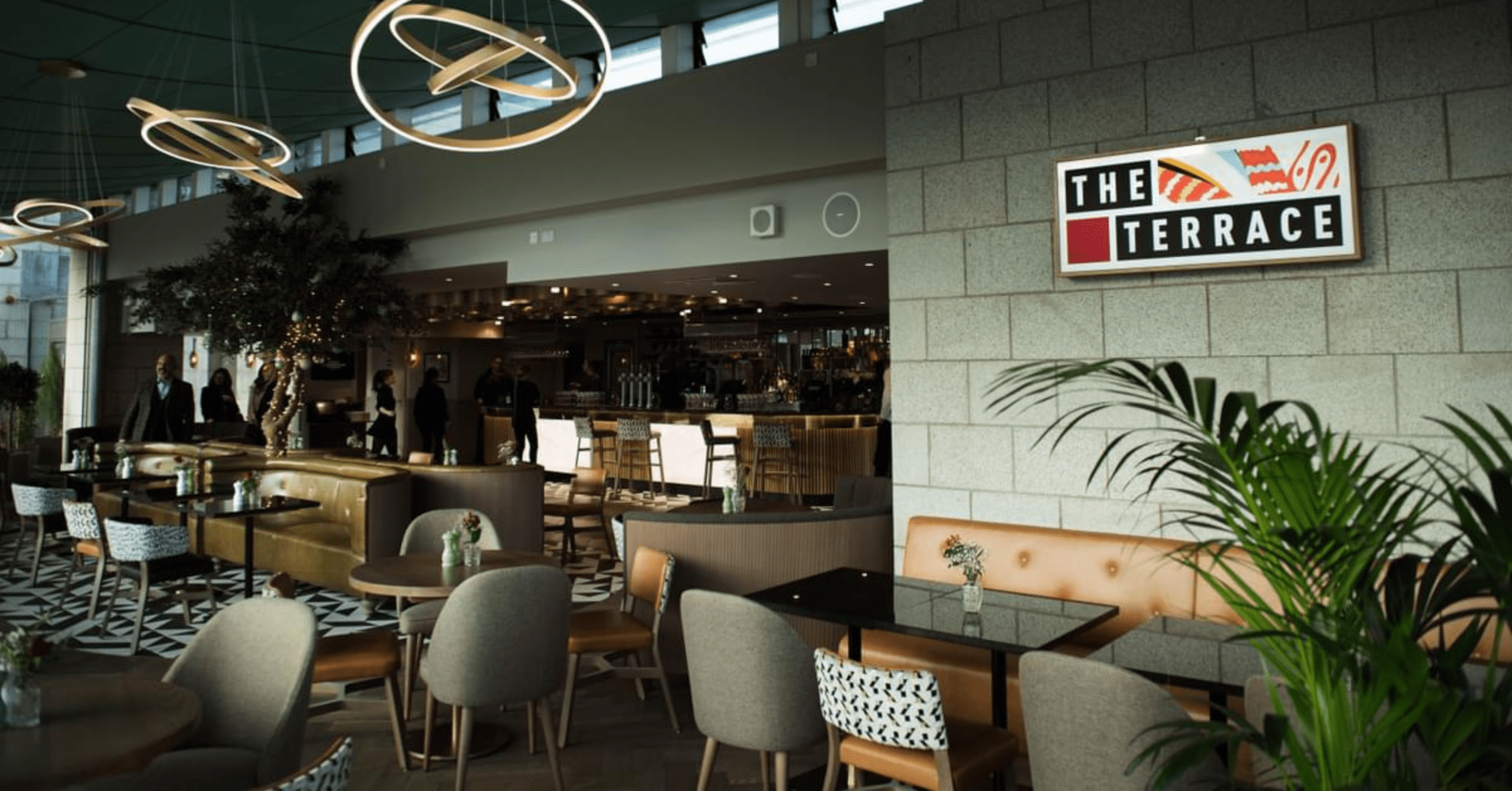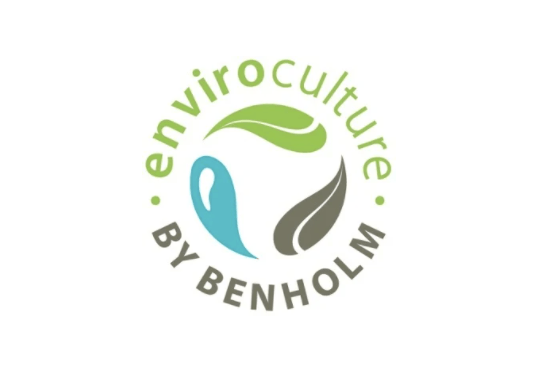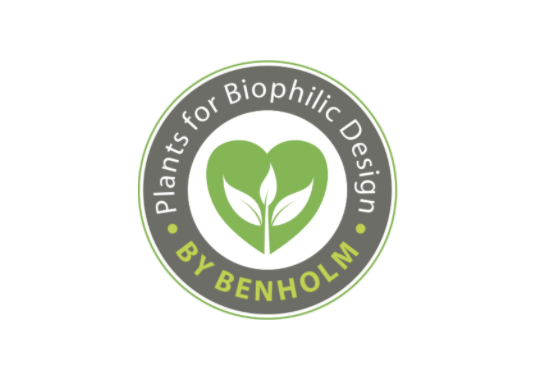In September 2021 Benholm Group exhibited at the #DesignPopUp event for Interior Designers in Glasgow. Always a great networking opportunity and place to show designers how plants and flowers can contribute to fabulous interior spaces, it was also a chance to uncover more about what interests an Interior Designer.
This report summarises our conversations.
Sustainability
Perhaps unsurprisingly, given how frequently climate and sustainability issues are in the news and COP26 being hosted in Glasgow, this was one of the most discussed topic areas.
At its most basic, the Interior Designers we spoke to want to work with materials that are both recyclable and have been made from recycled waste. But it goes beyond that. For example, everything has a carbon footprint; even if something is made from completely natural materials, there was energy involved in its manufacture, it had to be transported from place to place, and the interior fit-out uses consumables such as glues, fixings and frames.
For this reason, there was a lot of interest in the embodied carbon for an item. What is its total carbon footprint? Is it consuming and fixing carbon? Can it contribute to a carbon net zero interior?
This then links into the eco story behind products. We’ll mention stories again in a moment, but the point here is that it’s more than just a data sheet on the carbon impact or a set of figures. Designers want to provide a context, tell the tale, excite the client with the emotional elements of their work, especially when that helps to sell an environmentally positive approach.
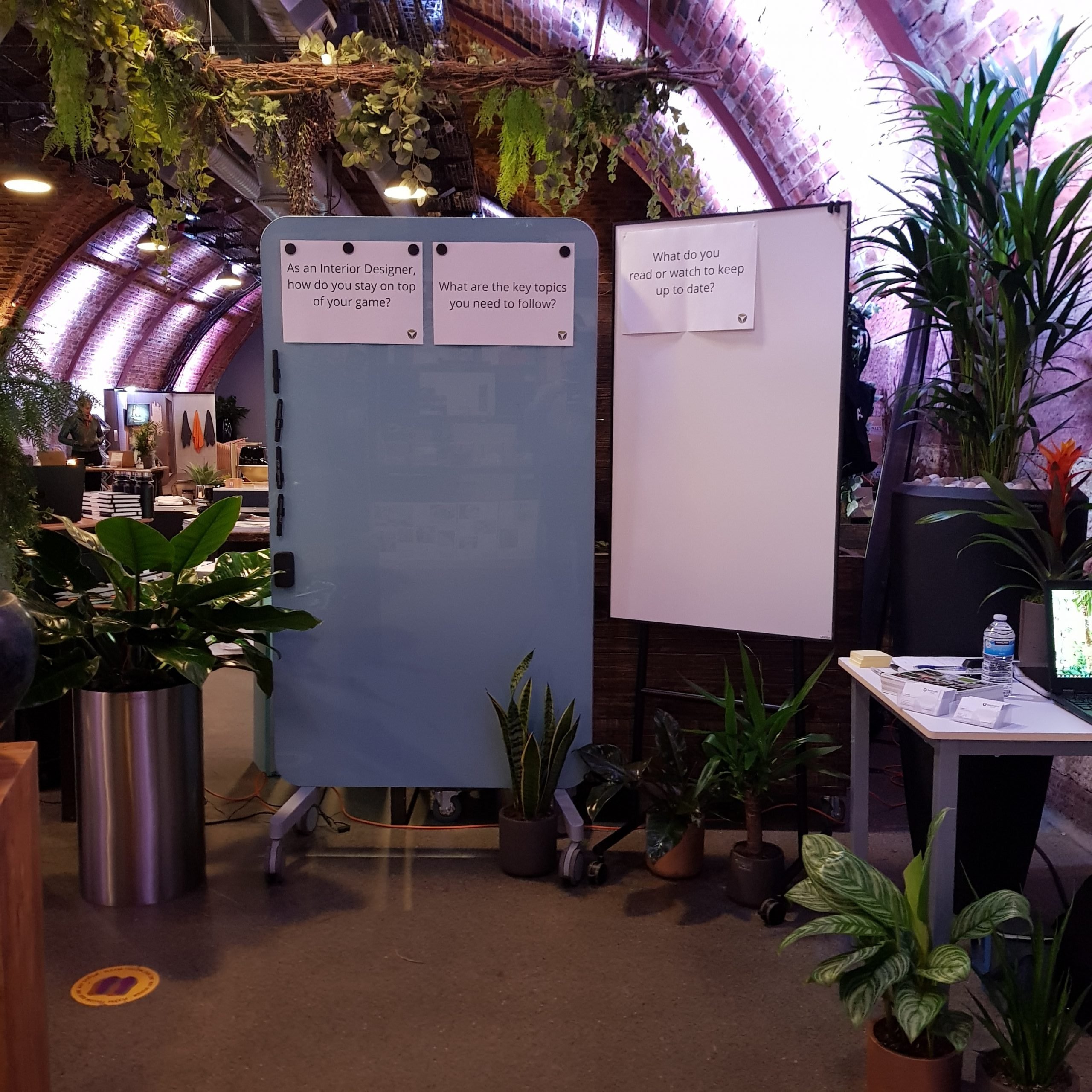
Biophilia & Lighting
Plants and flowers, whether in planters, living walls, baskets or anything else, contribute positively to interior spaces. There’s data to back this up – guests spend 36% more time in hotel lobbies where biophilic design has been applied, and guests are twice as likely to use the word ‘experience’ when providing feedback.
These factors are clearly on the radar for Interior Designers. They expressed an interest in knowing more about biophilic design in general, and the intersection of biophilic design and wellbeing specifically. They want to know about things such as planters, for example; where to get stylish planters, finding easy to move planters, and more.
Biophilic design can have straightforward functional benefits. One of the trends on the radar is micro-farming – creating indoor salad walls or indoor food farming.
Lighting as a general issue is high on the list for Interior Designers. In fact, lighting is another element of biophilia – it’s not just about plants, it’s every aspect of integration of natural elements into the built environment.
For this reason, both natural and artificial lighting are key factors where designers want to stay up to date.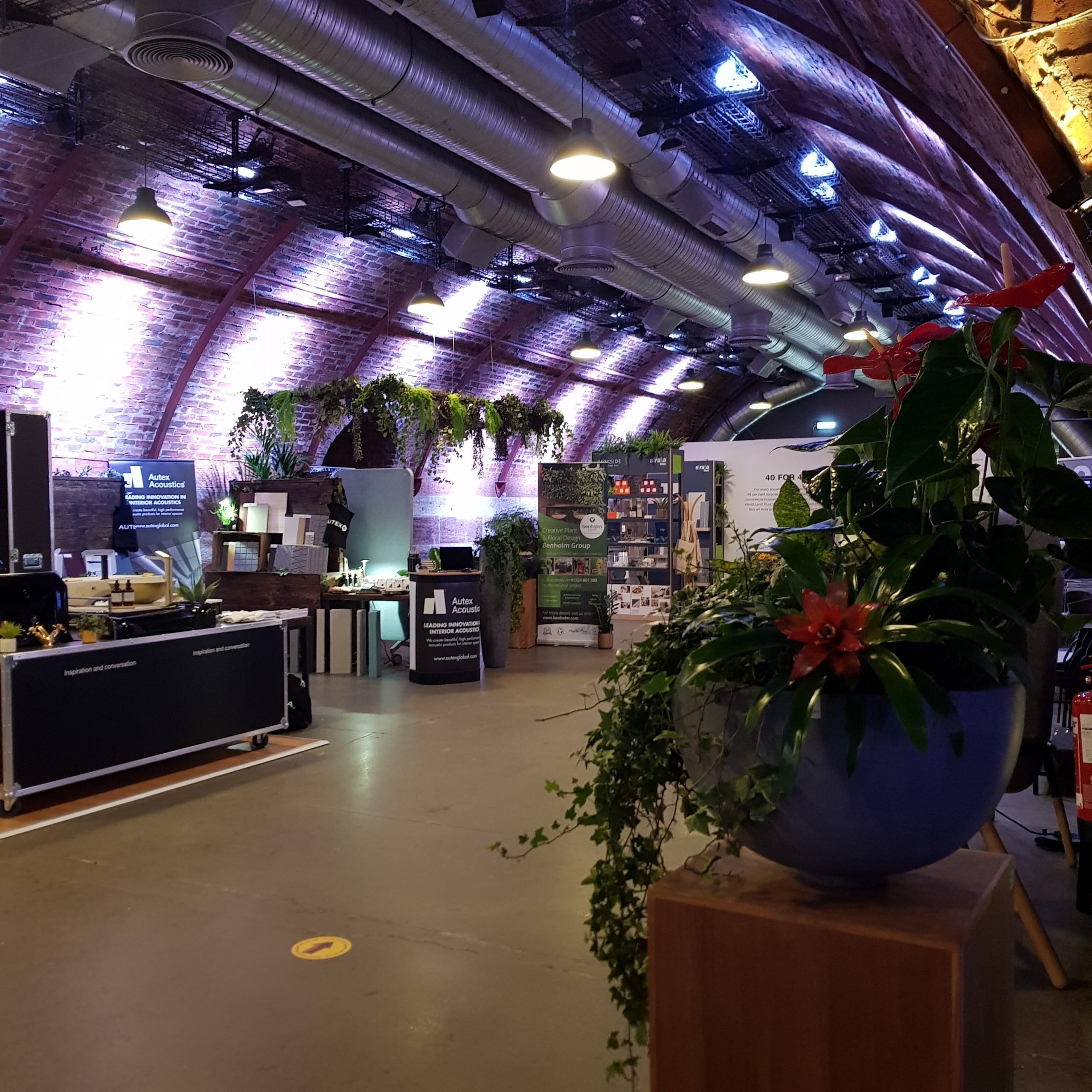
Human Connection
Spaces must be meaningful to people to be effective. Functionality alone is insufficient, the space itself must add value.
That’s why phrases such as ‘soulful interiors’ appeared in our discussions. Designers want to find products with a story, and which have significance for the user.
The human connection also means designing for inclusivity, ensuring that everyone – no matter their circumstances – can access the space.
Textures, Materials & Colours
Predictably, this is a key area where Interior Designers spend a lot of time, and it is high on the list of things where they want to remain in touch with trends. What new materials are entering the market? What are the latest trends across the industry?
One specific item that stimulated discussion was Nordik Moss, a natural and sustainable product for green walls. It even elicited a heart with an arrow through it!
Budget and Value
Interior Designers are also concerned about the hard numbers. Designs have to meet budgets, but it goes beyond that. Designers want to know what value is delivered by any extras that are included in a design. A post-occupancy evaluation, quantifying the impact of the design, is an important final step.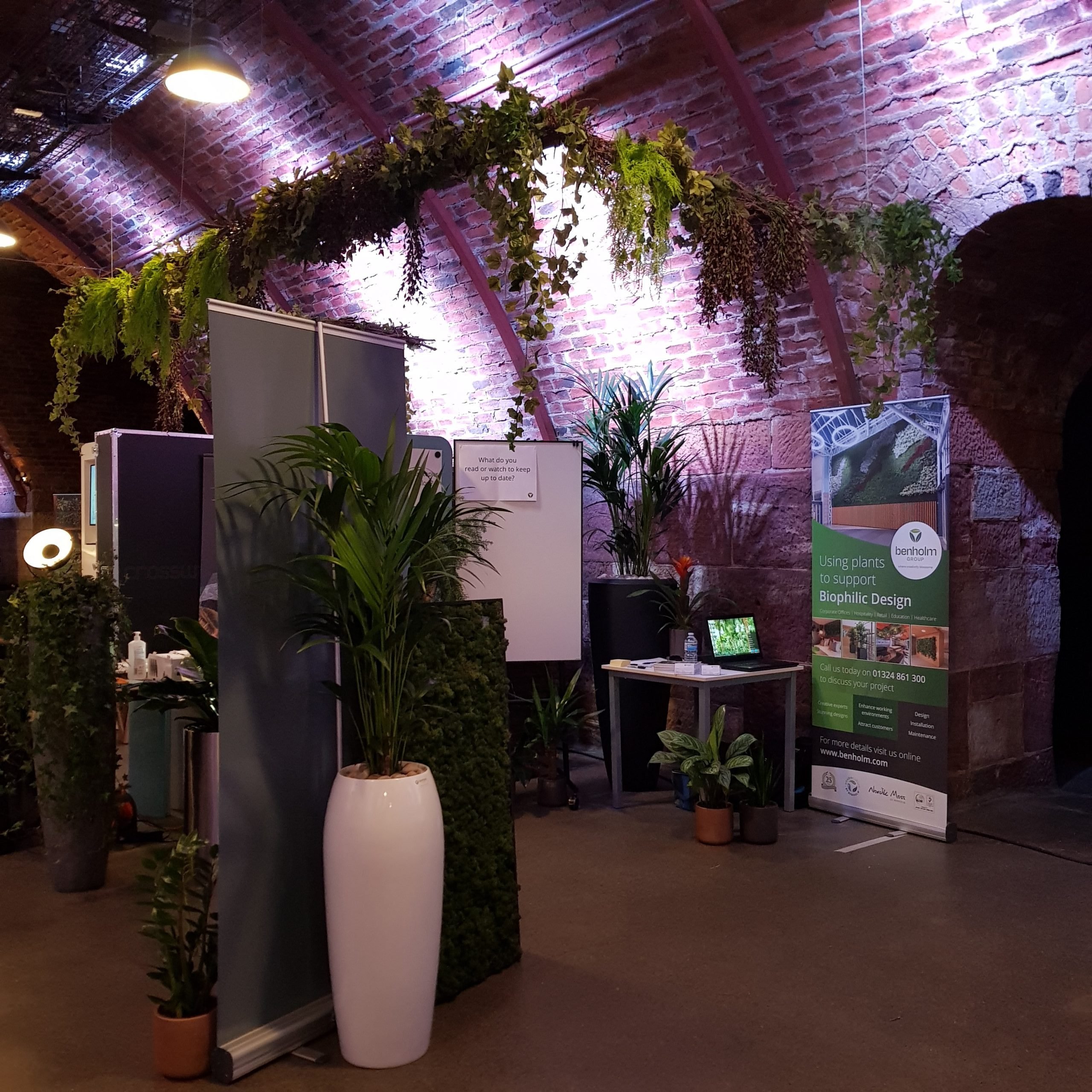
Staying Current
So how do Interior Designers keep in touch with the things they need to know? Naturally there are a variety of sources of information.
Reading relevant media is top of the list, and there are a variety of favourite titles that people read.
On top of that there are formal meetings, forums, industry award events; and informal methods such as Pinterest, LinkedIn groups, Instagram and other communities.
Overall, we had some fascinating conversations. We would like to thank everyone who stopped at our stand to talk to us.
Learn more about #DesignPopUp
Some of our recent projects include Johnnie Walker Princes Street, Royal Botanic Garden Edinburgh and La Chambre Verte – keep an eye on our socials to get a snapshot of our completed projects.
For more information about biophilic design or any other products or services we offer, call us on 01324 861 300 or email mail@185.216.77.122.



